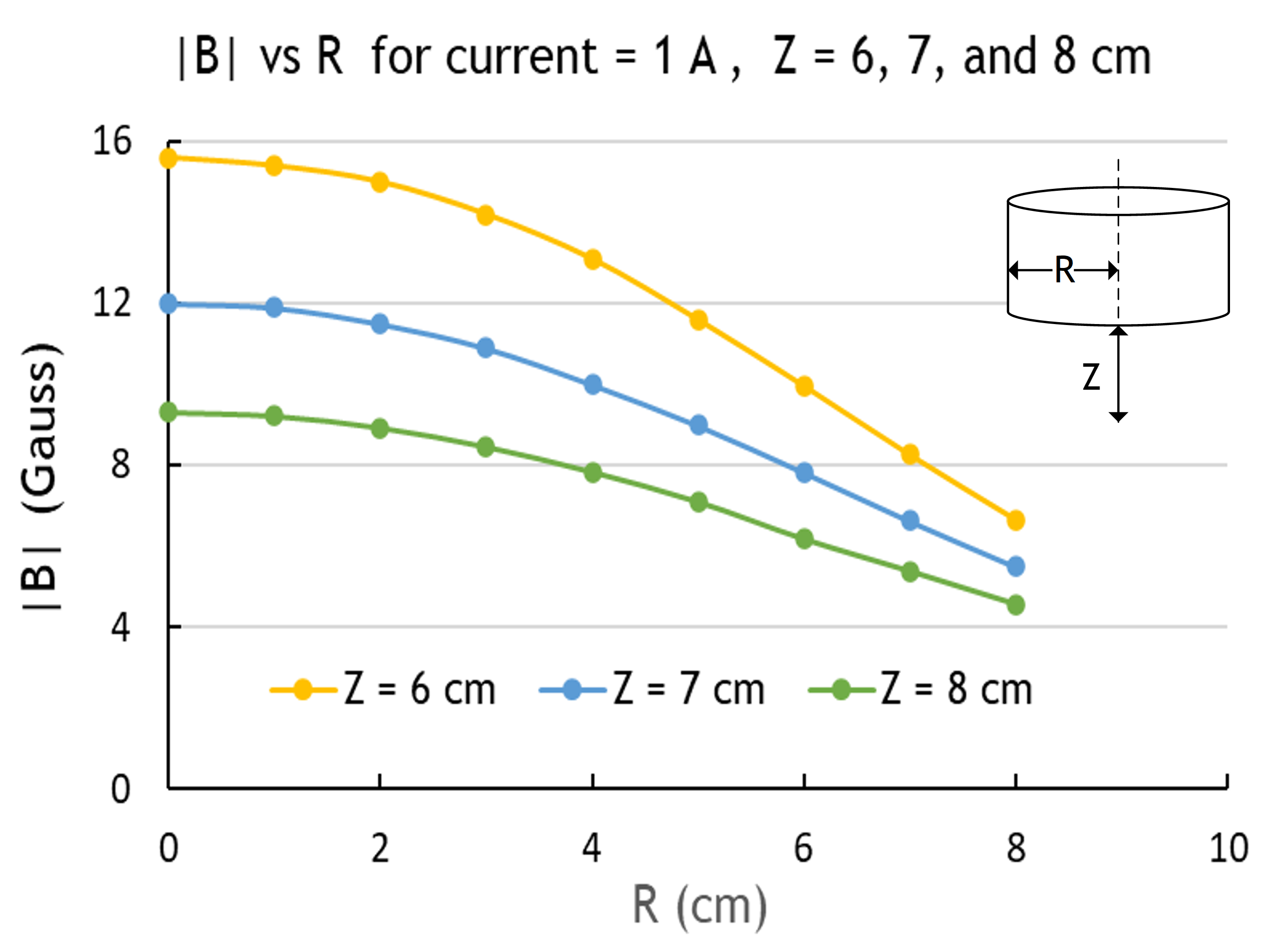Deconvolving magnetic mechanisms for avian orientation and navigation may provide insight for development of new microelectronic systems for navigation and other applications. Experiments reported on European Robins at a few MHz suggest magnetic field sensing in that species may be related to quantum effects with long coherence times at ambient temperatures – something scientists have been unable to achieve in the laboratory at this temperature and frequency.
As initial steps in our non-invasive avian magnetic field sensing investigations, we are developing test structures and methodologies for evoking and measuring response of a variety of species to step changes in DC and RF fields up to 10 MHz.
Design of DC experiments: A DC magnetic field is generated by passing a current through a circular coil placed such that the field will be applied to the head of a selected subject. The figure shows the calculated magnitude of the magnetic field |B| for a current of 1 Ampere flowing through our custom-wound circular coil.
Experimental setup comprises applying a DC magnetic field with our coil positioned in close proximity to a feeder or a preferred perch. Unknowing backyard recruits properly position their heads while feeding or at rest. A remote observer toggles the applied field up to 50X earth's field and records the response. With mobile deployment, experiments are being extended to long-distance migrants.
Design of RF experiments: The magnetic fields required are over four orders of magnitude lower than for the DC experiments, and a single-turn field coil is used. Current is supplied with an arbitrary waveform generator (ARB) with fields detected by reading the induced voltage in a sense loop. Both the ARB and oscilloscope are relatively low power and can be operated from our mobile AC power supply.




